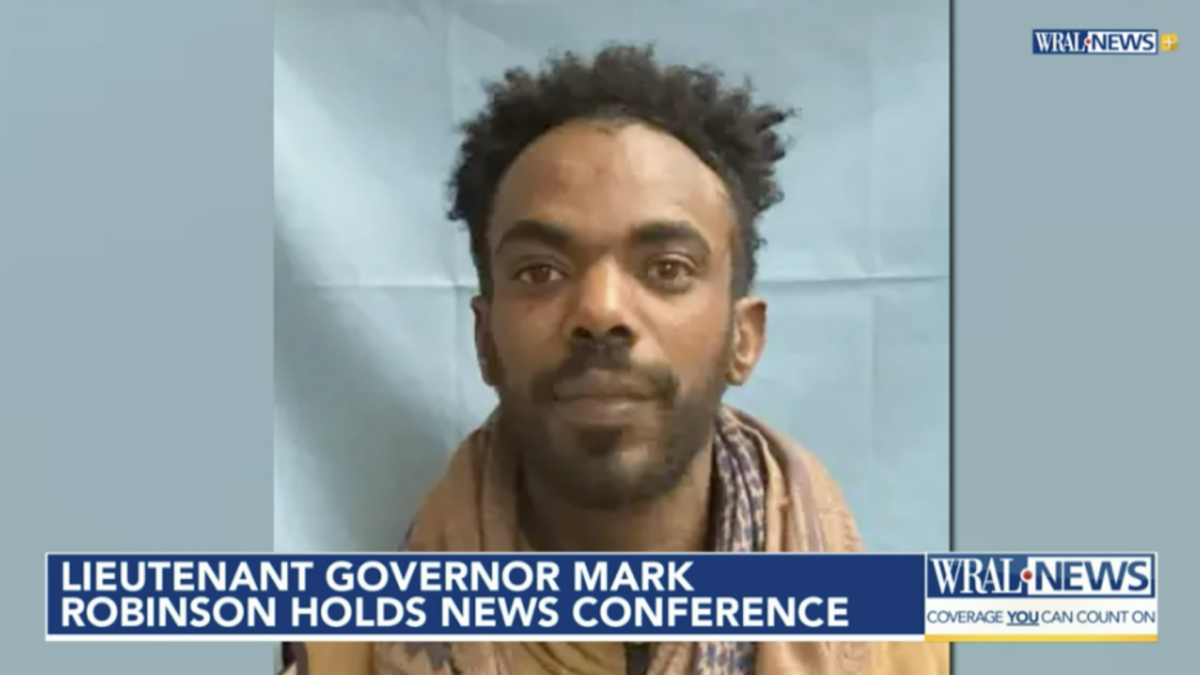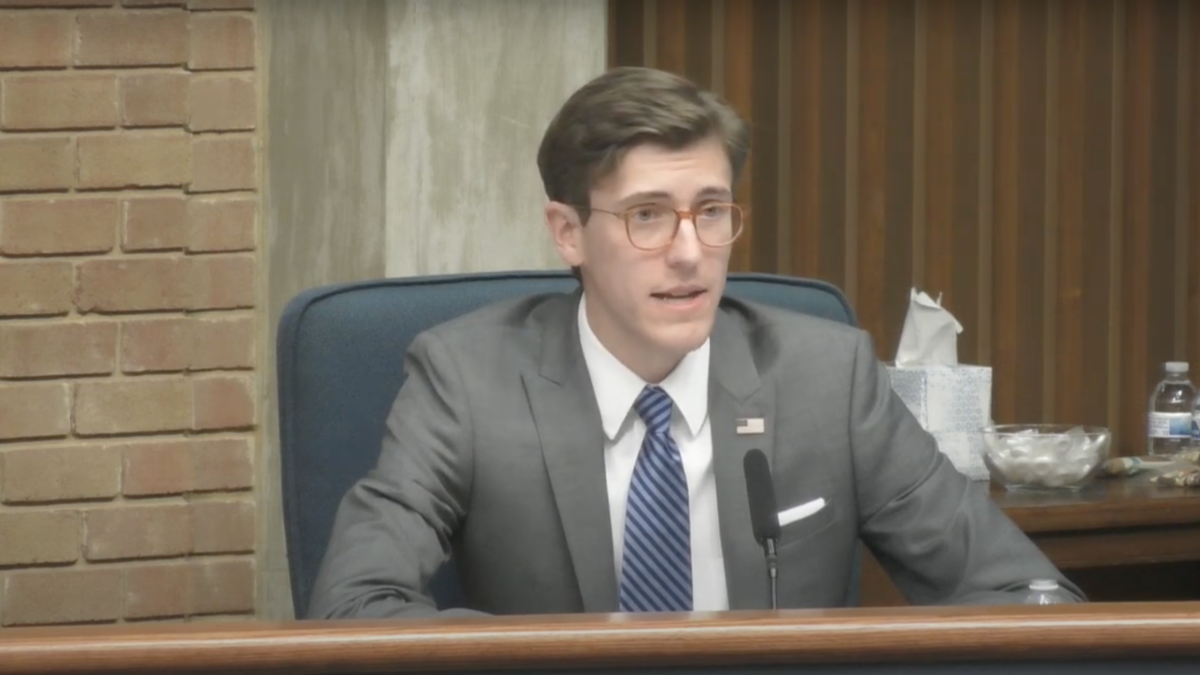AUSTIN, Texas — With an immigrant terrorism scare far from the U.S.-Mexico border, North Carolina now officially joins the no longer very exclusive “every-state-is-a-border state” club.
An immigrant reportedly from Yemen or an area near Yemen appeared in North Carolina’s rural northwest Gates County and began firing a rifle outside a Carolina Quick Stop store in the small town of Eure, then attacked responding Gates County Sheriff’s deputies and barricaded himself in a four-hour standoff with them. After the eventual arrest on assault and weapons charges, Sheriff Ray Campbell reported that Awet Hagos was on the FBI’s terrorism watch list and that U.S. Immigration and Customs Enforcement (ICE) wanted him on an arrest warrant “detainer.”
Only after all this did ICE run fingerprints and find that Hagos was on the terror watch list and had somehow made his way to Haiti and, from there, the United States. He’d been living in the area for six months, the sheriff later told local news, apparently sponsored by the Quick Stop store owner.
I have been unable to independently confirm that Hagos is watch-listed, and the name Hagos is commonly associated with nationals in Eritrea and Ethiopia, although populations of both countries do also reside in Yemen.
This entire circumstance demands a public inquiry and far more national attention.
These events an hour’s drive from multiple military installations did prompt North Carolina’s Lt. Gov. Mark Robinson, a Republican running for the governor’s office this November, to pen a letter to President Joe Biden demanding answers about Hagos and to hold a press conference. But these moves drew scant coverage from local newspapers like The Carolina Journal, which has reported that more than half a million immigrants have recently settled in the Tar Heel state.
“The Gates County Sheriff’s Office currently has only 12 deputies, yet they find themselves dealing with a violent illegal immigrant their own national security [databases] have flagged as a potential terrorist threat,” Robinson said at the March 18 conference. “I call on President Biden to give immediate answers. How did Hagos enter the United States? How did Hagos get to North Carolina? Are there other places he’s been in our state he’s traveled to or through, and should those areas be on heightened alert?”
To be sure, Robinson would no doubt like to catch the border crisis wind in his candidacy sail. Polling clearly shows the crisis that has brought millions of illegal immigrants to settle in every corner of the United States often ranks as the highest voter concern of the 2024 election, a deeply negative factor for Democrats.
But Robinson stands in good nonpartisan company in felling this tree, even if its fall was not heard very far and wide.
For one thing, the Houthi rebel group in Yemen, furious over American support for Israel’s war in Gaza, is front and center in a series of attacks against shipping in the Red Sea that has prompted U.S. military strikes and a re-designation of the group as a terrorist organization.
The Houthi leadership has publicly vowed a “big” response against the United States to counter any military action against them for their Red Sea attacks.
Even if he was more aligned with Ethiopian or Eritrean populations in Yemen, could Hagos have been motivated in any way by international events? That may be too early to know, but it’s not too early or unreasonable for anyone to ask and keep asking.
Nonpartisan homeland security experts say the threat of infiltration by anyone associated with terrorism ideologies through our vulnerable border management infrastructure is severe. The Biden administration’s own 2024 Homeland Threat Assessment warns on page 12 that “terrorists may exploit the elevated flow and increasingly complex security environment to enter the United States.
“Individuals with potential terrorism connections continue to attempt to enter the Homeland illegally between ports of entry … via the southern border,” the assessment reads, tallying that 160 terror suspects were detained crossing in just fiscal year 2023 alone.
Since the border crisis began on Inauguration Day 2021, Border Patrol has logged the apprehensions of 340 watch-listed immigrant terror suspects who illegally crossed the southern border, while a record-breaking 2 million so-called “got-aways” escaped apprehension to live inside the country, the U.S. Customs and Border Protection website reports.
In his latest testimony to Congress about what he regards as a rising terrorist infiltration threat, FBI Director Christopher Wray told the Senate Select Committee on Intelligence that a “wide array of very dangerous threats … emanate from” the southwest border, including the designated terror group ISIS.
“So, I want to be a little bit careful about how far I can go in open session,” Wray testified. “But there is a particular network that has, where some of the overseas facilitators of the smuggling network have ISIS ties that we’re very concerned about and that we’ve been spending enormous amount of effort with our partners that we’re investigating.”
But even more alarming than that a record number of known watch-listed aliens were caught is the growing list of watch-listed terror suspects mistakenly released or lost due to federal agencies being overwhelmed.
Just this March, a Lebanese immigrant on the FBI watch list who crossed from Juarez to El Paso confessed to medical personnel, not federal agents, that Hezbollah had sent him to build a bomb in New York. It seems that Basel Bassel Ebbadi was on track to be freed had he not tried to ingratiate himself with a voluntary confession to untrained personnel.
There was the April 19, 2022, accidental release of a Lebanon-born Venezuelan on the watch list. ICE agents were not able to track him down to Florida for two full weeks. DHS’s inspector general’s office investigated and concluded it happened, in part, because Border Patrol agents “were busy processing an increased flow of migrants.”
In 2022, Border Patrol waved through a watch-listed Somali member of the al-Shabaab terrorist group near San Diego. He was free to do damage for most of a year before authorities untangled their mistake and picked him up in Minneapolis.
There was the release of a dangerous FBI watch-listed terror suspect, a Lebanon-born Venezuelan who crossed into Brownsville but was cut loose on orders from Washington despite ardent FBI protests that he remain in detention.
There was a watch-listed Yemeni caught in Mexico as he was about to cross who got released anyway without U.S. advanced warning, which prompted a manhunt for him.
Late last year, New York police arrested a Senegalese man wanted in his home country for “terrorist activities” who somehow got into the American interior.
And a Pakistani illegal immigrant on the watch list was accidentally released before U.S. authorities luckily caught up with him a day later.
These cases, and the fact that ICE only now flagged the North Carolina Yemeni as a watch list match, raise the question of whether authorities missed him too.
This case also raises the question Robinson asks, from either side of the aisle: How did Hagos get from Haiti to the United States? Did the administration authorize him to fly from Haiti directly into the United States as part of its secretive humanitarian parole “flights” program, the same one that allowed a now-accused Haitian child rapist to fly into New York’s JFK airport?
The American public can only hope the Biden administration’s interest in good national security governance outweighs its concern about any political damage the answers may bring.
Correction: This story originally labeled Hagos as a Yemeni migrant. His country of origin is still unconfirmed.








